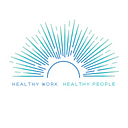Sources of stress at work are increasing in the U.S. — Paul Landsbergis, PhD, MPH, EdD — Contributing Researcher and Blog Writer and Stephanie Myers, MPH, PA-C, SUNY-Downstate School of Public Health, Brooklyn, NY
“Working on Empty” (WOE) is a multimedia project on how the U.S. workplace is making Americans sick and what must change to protect the health of our workforce.
___________________________________________________________________
There are many sources of stress at work, and many types of illnesses and injuries that job stressors can cause. For example:
• A 49 year old African-American bus driver, who commutes 1 hour for a 12-hour split shift (working from 6–10 am and then again from 2–6 pm), driving through the congested streets of a large city, is trying to keep his hypertension under control. He does not smoke cigarettes and does not drink alcohol.
• A 56 year old Hispanic hotel housekeeper, who works without rest breaks to complete the many rooms she has to clean daily, is experiencing back and shoulder pain.
• A 39 year old Caucasian male temporary worker for a major software company, who works long hours yet gets fewer holidays, vacation days, and pay raises than his salaried coworkers, is experiencing headaches, irritability, and difficulty sleeping.
• A 52 year old female nurse, who cares for seven high-needs patients, does not eat lunch, and often works extra hours, feels emotionally drained, experiences palpitations, and was recently diagnosed with hypertension.
We all know people whose health is affected by job stress, possibly including ourselves! And, it sometimes seems that work life is getting more and more stressful. But, is it?
Fortunately, a government agency, the National Institute for Occupational Safety and Health (NIOSH) has been conducting surveys of a cross-section of the workforce in the U.S. every 4 years — in 2002, 2006, 2010, 2014, and, if their budget isn’t cut, again in 2018. Therefore, we analyzed the data from the past 4 surveys looking at workers at least 18 years old and in non-military occupations.
We looked at 6 main factors at work that have been linked in past research to illnesses:
The national surveys showed real increases in low job control, job strain and work-family conflict between 2002–2014. Low job control and job strain can increase your chances of having a heart attack or stroke. Therefore, the recent increase in the death rate from heart disease and stroke from 2014 to 2015, after decades of a decline in the death rate, might be influenced, in part, by the increase in sources of stress at work that we found. Low job control might be increasing because of the decreased power of workers in workplaces due to fewer workers being union members, less political influence of workers in state legislatures and Congress, or continued economic globalization leading to more job insecurity, non-standard work arrangements and fear of job loss in the U.S.
Increases in work-family conflict in the U.S. are likely due to the increasing burdens faced by working parents, moms and dads experiencing similar levels, due to the high cost of quality child care, difficulty in providing elder care, inflexible work schedules, or long hours. Generally, low-skilled lower income workers who have fewer options when family and work events demand their time are more often affected than highly-skilled higher income professionals.
The national surveys also showed little or no change in job demands, low social support at work, and low rewards between 2002–2014.
There are also many ways in which workers have been able to increase job control at work or reduce work-family conflict at least in some cities, states and workplaces, for example, by:
• working with unions and community organizations to pass laws that allow employees to sue if they were bullied at work, or require employers to provide advance notice of schedules, paid sick leave, or paid family leave, or provide nurses with safe staffing levels or the right to refuse mandatory overtime.
• if you are a union member, bargaining contracts that give workers a greater say over wages, hours, and working conditions, including combating bullying at work.
• if not a union member, by working with a worker center (worker advocacy group), or by becoming a member of a cooperative.
For more details on the methods used in our analysis, or some of the statistics, please contact paul.landsbergis@downstate.edu.
To support the WOE movement:
- Share this article with a friend or a colleague.
- Connect: Facebook & Twitter.
- Visit: workingonempty.org.
- E-mail: WorkingonEmptyDoc@gmail.com
With your help, we will have created more than hope — we’ll have cemented lasting, positive change in the name of healthy working conditions.
